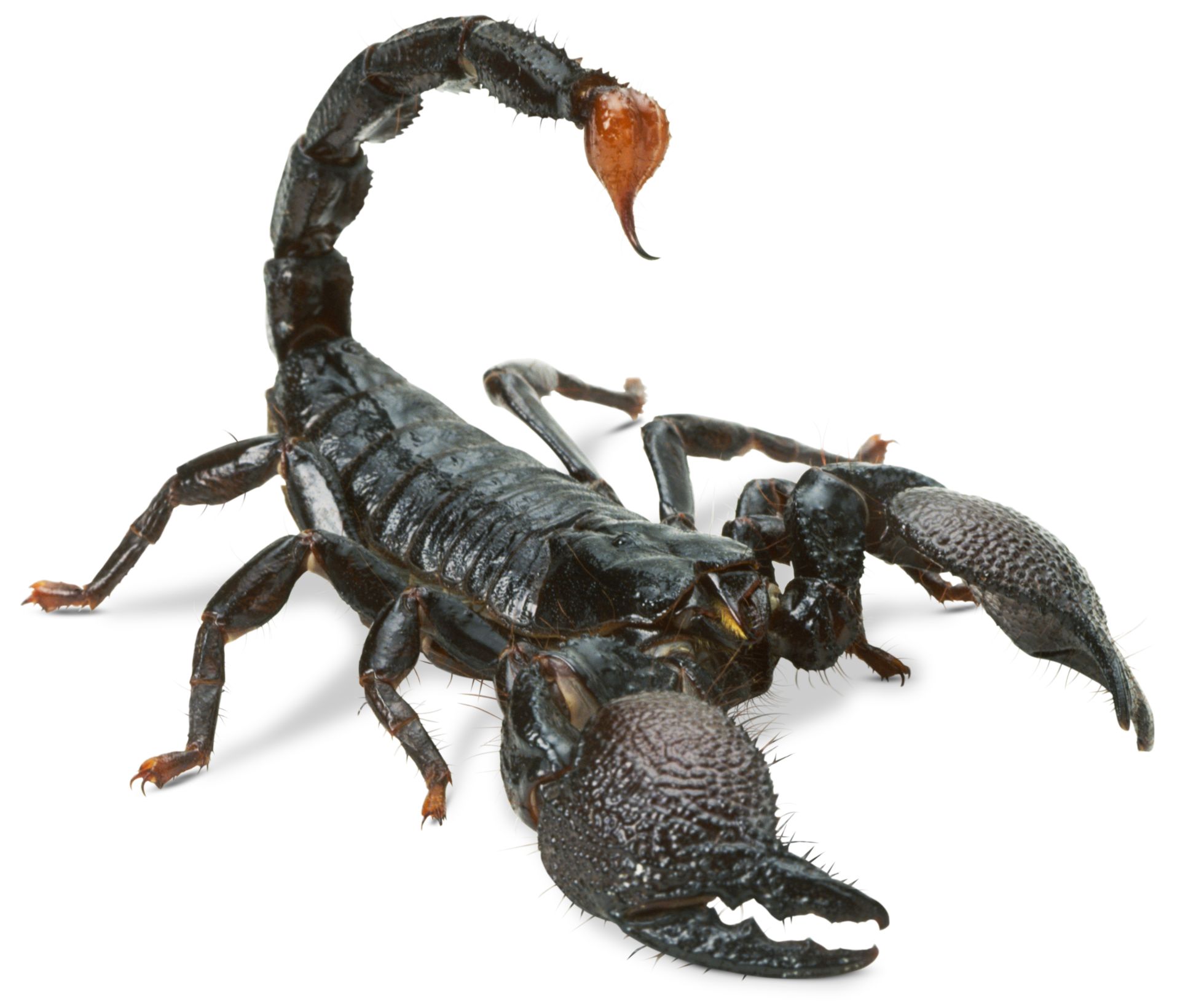
As if scorpions aren't horrifying enough...they glow.
Sounds like an element used by an evil villain in a Sci/Fi book! But you don't have to travel to outer-space to see them, they're crawling around right here in the USA.
All you need are nerves of steel and a black light.
Imagine a "herd" of these coming at you in the dead of night.
When UV light hits these creepy crawlies (including moonlight) it is converted by proteins in their exoskeletons into light of a blue hue, which is visible to the human eye.
Some theories bandied about as to why this happens are: glowing might help scorpions find each other (their earth-tone coloring makes them otherwise difficult to spot in the desert), or they do it to dazzle prey, or the light conversion effect could act as a sunscreen.
Upon experimental investigation, however, none of these hypotheses hold up to scrutiny, leading some arachnologists to speculate that scorpion fluorescence has no function at all. Perhaps, they say, it's just a random act of evolution.
"Based on UV light levels, it may determine whether or not they should come to the surface to look for prey. Scorpions are nocturnal creatures. They abhor the heat and evaporative effects of sunlight, and it turns out they specifically avoid UV light, even that of the moon. If they are well fed they tend to be less active on a full moon."
In 2010, Carl Kloock overexposed scorpions to UV light to use up the fluorescing chemicals in their skin (which break down as they glow). Kloock found that scorpions that could still glow stuck to a sheltered area, while the others spent more time in the open unable to sense the light.

More testing is being done by both Professors Kloock and Gaffin. Until then keep that black light handy so you can see these the scary little monsters coming.
Thank you Kim for the blog-post idea.

